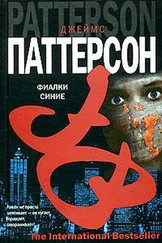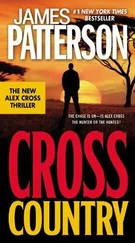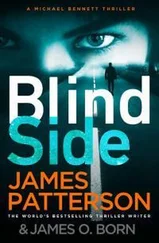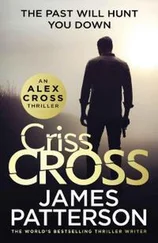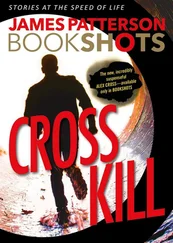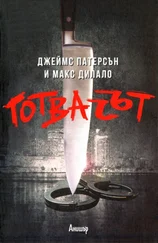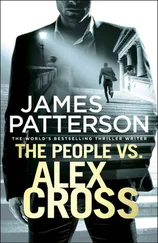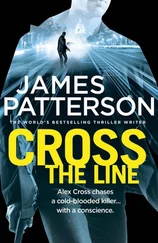A split second later, President Hobbs staggered back into his Secret Service agents. Rawlins froze the image.
“No one heard a gunshot,” Director Sanford said.
“Because there was no gun,” I said. “No conventional one, at least. Can we see him shoot the secretary of defense?”
Rawlins said, “I didn’t look.”
He stayed with the suspect as he moved with the crowd past the fallen president. Then the shooter shifted his hips toward the stage and raised his left hand toward Harold Murphy.
The footage got a little jerky, but you saw the blond man’s hand arching again, and the secretary of defense going down.
“What’s he doing with his hand?” President Larkin said.
“I think he’s triggering an air gun of some sort,” I said.
Sanford looked up from his phone. “Which explains the pieces of bullet they took out of President Hobbs twenty minutes ago.”
The FBI director forwarded an image to Rawlins, who put it on the screen: a photograph of dark gray pieces lying in a steel pan.
“It will have to be analyzed, but I’ll bet that’s graphite or carbon,” I said. “His weapons were probably made out of polymers that are undetectable by current methods.”
Rawlins typed again. The screen filled with a clear shot of the blond man in the tinted glasses.
He said, “I’d get this picture in the hands of all law enforcement at that arena and everywhere else in the country.”
“Wait,” I said, studying the picture. “He’s posing as a cleric, presumably. Who says he really has blond hair and wears glasses?”
Rawlins smiled. “I’m barely a half a step ahead of you, Dr. Cross.”
Bree and Sampson were still working outside the main entrance to the DC arena, interviewing kids, parents, and guardians, when Bree’s phone buzzed.
After she had finished talking to a young girl from the Philippines, she got out her phone and found a text from Alex. He’d sent a link labeled Hobbs’s shooter.
She clicked on it, saw the blond minister, and remembered Leonard, the guy found beaten in the basement. He’d said he was hit by a blond man.
But how did that work? Did the blond have time to shoot Hobbs and the secretary of defense and then go down to club the maintenance man?
Or were there two assassins, both dressed similarly? One in the basement cutting the lights, one upstairs trying to kill a president?
Her phone buzzed; another link from Alex: Shooter in left profile.
She clicked it, saw the same blond minister reaching out his right hand toward President Hobbs. The next link showed his right profile, but it was blurry. Bree tried to blow it up, but the resolution got too grainy.
The fourth link showed him from behind, arm stretched out toward Hobbs.
The fifth, sixth, seventh, and eighth images came in with a note that read
Shooter with disguise digitally removed courtesy of K. K. Rawlins.
She thumbed the first new image. The blond hair and glasses were gone, leaving the man bald and blurry about the eyes. The two profile pictures were of interest, but it wasn’t until she opened the eighth link that she really paused.
With the blond hair gone, as she looked at the shooter from behind, she could see something odd about his right ear. She zoomed in on it and felt her stomach drop.
It was a hearing aid. No doubt.
Feeling confused, then certain, and then panicked, Bree yelled at Sampson, “We’re leaving, John!”
Sampson apologized to the woman he was interviewing and ran after Bree as she barked into her radio. “This is Stone! An ambulance left the arena forty minutes ago. Where’d it go?”
“GW,” the dispatcher said. “EMTs handed him off twenty-five minutes ago.”
“Who’s the officer with him?”
“Pettit. You want me to raise him?”
Bree stopped at the car and tossed the keys to Sampson, weighing the pros and cons of alerting a young patrol officer that he might be sitting on a would-be presidential assassin. And what if the shooter was with Pettit and heard her warning?
“Chief?” the dispatcher said.
“No,” Bree said, climbing into the front seat. “Get me Pettit’s cell phone number.”
Sampson threw a bubble on the roof and hit the siren. They roared off across town, running red lights in virtually zero traffic as they closed in on George Washington University Hospital in the Foggy Bottom neighborhood of the District.
“What’d he do?” Sampson said. “Beat the snot out of himself? Knock out his own teeth?”
“It worked,” she said, furious. “His own mother wouldn’t have recognized him.”
“And being deaf?”
“No idea.”
The dispatcher came back with Officer Pettit’s cell phone number.
“Good,” Bree said. “How many patrol cars available to respond?”
“Four. FBI’s using the rest to keep the city tied down.”
Bree gave orders to move the four cruisers to the roads that formed the perimeter of the medical center, and then she called Pettit.
It went immediately to voice mail. She tried again. Same thing.
Bree still didn’t want to call the officer on the radio for fear he’d be in range of Leonard, or whoever the shooter really was. After trying a third time, she called Alex.
“Hi,” he said, sounding out of breath. “Where are you?”
“About to get on a military jet at Andrews.”
“Going where?”
“West Texas.”
“Why? The president was shot here.”
“We want to see every crime scene.”
She heard the heavy whine of a jet engine on his end.
“When are you coming back?”
His voice was almost drowned by the noise. “I don’t know.”
“I think we’ve got Hobbs’s shooter,” she said. “He’s at GW.”
“What’s that? I can’t hear you.”
The engine roar got worse and the connection died just as Sampson pulled over at the entrance to the GW emergency room. It had started to rain again.
“Chief,” Sampson said. “You need to tell the FBI he’s here.”
Bree had intentionally delayed, but now she nodded and told dispatch to notify FBI command that she and Sampson were investigating a possible suspect at the hospital. She didn’t give any more than she had to, figuring if she and Sampson made the collar on Hobbs’s shooter, she’d never hear another discouraging word from Chief Michaels — or anyone else, for that matter.
Inside, they showed their badges and IDs to the charge nurse and asked where Leonard was being treated. The nurse looked it up, said, “Multiple facial cuts and fractures. He was stitched, bandaged, and moved to radiology. He’s getting a CT.”
She gave them directions to the CT scanner, which had been temporarily moved to a lower level in an older part of the complex while new facilities were being built.
Bree and Sampson followed her directions, getting off an elevator just as a male doctor in scrubs, Crocs, a surgical cap, and a hooded rain jacket entered the elevator next to theirs. Bree caught a glimpse of an older man with gray, loose skin, wavy dark gray hair, and glasses.
He wore headphones but was also talking on his cell phone. Bree heard him complaining about the number of autopsies he had to do before he could go home.
“They’re stacked like cordwood in there,” the pathologist said as the elevator doors shut.
Walking down a hallway with an industrial feel, Bree and Sampson passed pathology and the morgue. They pushed through double doors at the far end of the corridor and took a right into an empty passage with a small sign that read RADIOLOGY.
Bree got her badge out and loosened her service weapon in its holster.
Sampson opened the door.
“No!” Bree said, staring in disbelief at Metro PD Officer Walter Pettit who was lying on the floor with a neck that looked broken and his service revolver missing.
Читать дальше

